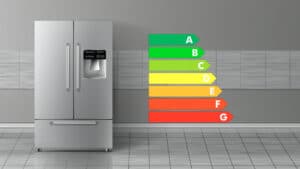Two factors currently play an important role in energy storage:
Firstly, the balance between energy production and consumption is crucial. Secondly, it is about finding a strategy for not being dependent on fossil fuels.
The most common renewable energies, such as wind and photovoltaics, produce electricity depending on the weather conditions and not according to the energy consumption required by the end consumer. That means, that the production of energy does not have to coincide with the volume of consumption. To avoid this loss or excess of energy, more efficient systems are needed that are capable of storing energy and feeding it into the grid when needed.
Electrical energy per se cannot be stored and must first be converted into:
- mechanical energy, like a pumped power station
- chemical energy, for example batteries, accumulators.
Energy storage systems (pumped storage power plants, batteries, accumulators) have different storage capacities.
Depending on the capacity level, we have the following categories:
| Power storage | Levels | Examples |
| Large scale | at the level where electricity is produced in large quantities (GW). | hydraulic pump or thermal storage systems |
| Medium scale | at the level of network operators/ electricity grids (MW) | batteries, accumulators, capacitor cells, superconductors or flywheels |
| Small scale | at household level (kW) | Batteries, superconductors or smaller flywheels |
Within existing storage technologies, batteries are the most common storage devices. Their use is increasing both in households and by network operators.
The most common is the lithium battery. Lithium can accumulate large energy charges due to its electrochemical potential, but its production is currently associated with high costs. BloombergNEF forecasts a reduction in these costs: By 2030, they could possibly even be halved.
It is to be expected that energy storage technologies will become even more efficient, effective and affordable in the future.
New systems of energy production from renewable sources are and will continue to be crucial components in overcoming our dependence on more traditional energy sources. To this end, energy generation and energy storage systems must go hand in hand in their further development.
Thanks to Marta Hollederer.
References & Resources
- BloombergNEF (5 Marzo 2019), “A Behind the Scenes Take on Lithium-ion Battery Prices”
- REE – , “Almacenamiento energético”
- Stockvault




Comments
Like!! Thank you for publishing this awesome article.
Author
Thanks for reading it!
I was checking your amazing post earlier but still This information you are providing is magnificent.
Ireally like this style of writing and how well the ideas are conveyed.
You really have an amazing way of thinking about things.
Author
Dear 안마,
thank you for your warm words. they encourage me a lot to continue with this small personal project.
Kind regards.
María
When some one searches for his vital thing, thus he/she desires to be available
that in detail, so that thing is maintained over here.
Author
Dear 일본야동,
thanks for your kindness.
Kind regards.
María